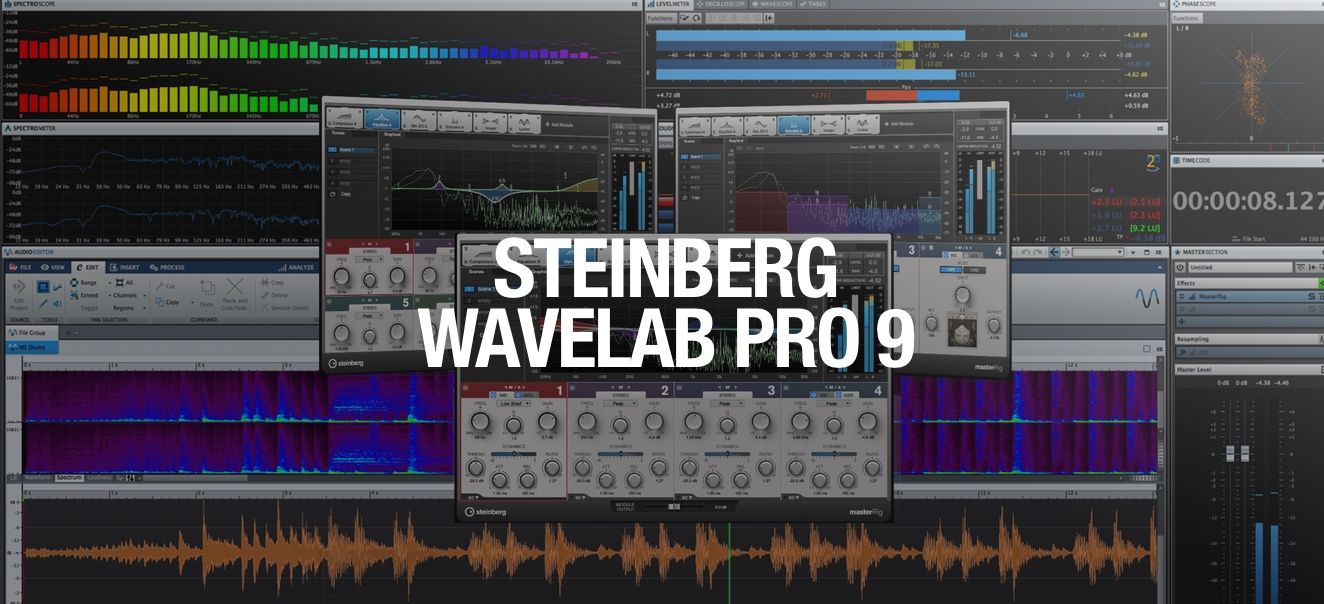


But the addition of montage Inline Editing means that changes made in the audio editor are saved as a new file that then replaces the corresponding clip or range within the montage. In previous versions of WaveLab, edits made in the montage editor are non-destructive, while those made in the audio editor are destructive. WaveLab can handle as many simultaneous streams and processors as your audio I/O and system resources allow, making this feature particularly useful in live and location recording, where it will allow input signals to be conditioned on-the-fly without the need for loads of bulky and expensive outboard equipment. This uses the same efficient video-playback engine as found in Cubase and Nuendo, and allows you to bring WaveLab’s advanced audio toolset to bare on video-based projects.Īnother new addition to the montage editor is the ability to record live input streams and render them through the plug-in chain and master section. The second new track type – and arguably one of the most overdue additions to WaveLab – is the video track. You can even route reference tracks to their own output on your audio I/O hardware. The first of these, Reference Tracks, allows you to include guide audio in the montage’s timeline, and to seamlessly switch between monitoring the reference and main montage output. This new tool consolidates clip-, track- and montage-level handling of plug-ins, volume and routing, packing all into a single control panel that, by default, sits conveniently in the same toolbox as the Master Section.Īlong with the Inspector, montages have had some other improvements, too, with a new, smarter-looking track header design, the ability to freely resize tracks and two new track types. New here is the Montage Inspector that replaces the Effect Tool panel found in previous versions (for the uninitiated, a ‘montage’ is WaveLab-speak for an album or collection of audio clips).
#Steinberg wavelab elements 9 software kaufen windows#
WaveLab 10’s interface retains its standard look and feel, with moveable and dockable tool windows surrounding the main waveform view.

This latest release brings WaveLab up to the same version-10 labelling as its stablemates Cubase and Nuendo – and brings a number of new features along with some general improvements. In the years since its release, WaveLab has become one of the core products in Steinberg’s stable of thoroughbreds, receiving regular updates and improvements to keep up with the digital-audio art of the possible. Largely the work of a single developer, Philippe Goutier, the program was one of the first to bring detailed, interactive, onscreen audio editing within reach of home and semi-pro studios.įrom the get-go, WaveLab’s capabilities dovetailed perfectly with the needs of audio professionals and hobbyists alike: it simplified the process of creating audio CD masters that could be sent for duplication it provided a far, far better approach to editing and manipulating samples than poking around on the little LCD screens that adorned the hardware samplers of the day and in broadcasting, its slick editing and rapid workflow were a massive improvement over the exquisitely expensive systems many broadcasters were then using. Way back in 1995, when studios were built around mixing consoles and the closest most of us could get to digital multi-tracking was via the souped-up videotape recorders that were the Alesis ADAT and Tascam DA-88, Steinberg released the inaugural version of WaveLab.


 0 kommentar(er)
0 kommentar(er)
